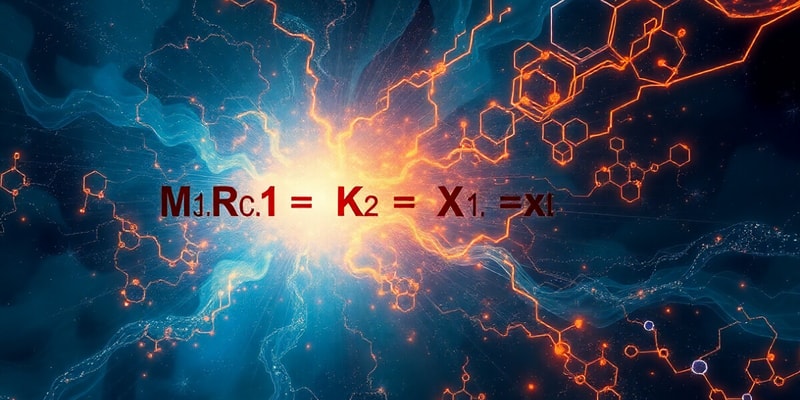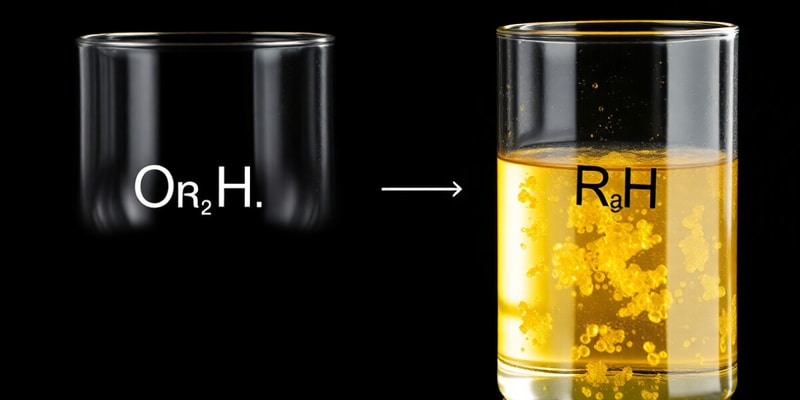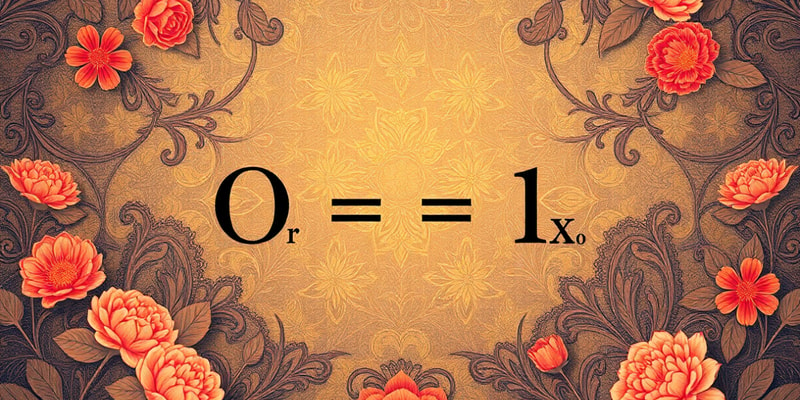Podcast
Questions and Answers
What are the oxidation states of zinc and nitrogen in the reaction?
What are the oxidation states of zinc and nitrogen in the reaction?
Zinc is oxidized from 0 to +2, while nitrogen in nitrate is reduced from +5 to -3.
Write the balanced half-reaction for the reduction of nitrate to ammonia.
Write the balanced half-reaction for the reduction of nitrate to ammonia.
NO3- + 6H2O + 8e- → NH3 + 9OH-
What role does hydroxide play in the overall reaction?
What role does hydroxide play in the overall reaction?
Hydroxide acts as a base that combines with protons to maintain charge balance and neutralize acidity.
How is the charge balanced in the oxidation half-reaction?
How is the charge balanced in the oxidation half-reaction?
Signup and view all the answers
What is the significance of multiplying the oxidation half-reaction by 4?
What is the significance of multiplying the oxidation half-reaction by 4?
Signup and view all the answers
What is indicated by the final balanced reaction of 4Zn + 7OH- + NO3- + 6H2O → 4Zn(OH)42- + NH3?
What is indicated by the final balanced reaction of 4Zn + 7OH- + NO3- + 6H2O → 4Zn(OH)42- + NH3?
Signup and view all the answers
What occurs during the balancing of oxygen and hydrogen in the half-reactions?
What occurs during the balancing of oxygen and hydrogen in the half-reactions?
Signup and view all the answers
In what way does this reaction exemplify a redox process?
In what way does this reaction exemplify a redox process?
Signup and view all the answers
What conditions are required for this reaction to proceed in a basic medium?
What conditions are required for this reaction to proceed in a basic medium?
Signup and view all the answers
Study Notes
Identifying Oxidation and Reduction Species
- The reaction involves zinc (Zn) and nitrate ions (NO3-) as reactants.
- The products are tetrahydroxozincate(II) ions (Zn(OH)42-) and ammonia (NH3).
- The reaction occurs in a basic aqueous solution.
Balancing the Half-Reactions
- To balance redox reactions, the process involves two half-reactions.
- The first step is writing skeletal equations for each half-reaction, balancing all elements except hydrogen (H) and charge by inspection.
- The next step is balancing oxygen (O) by adding water (H2O) molecules.
- Hydrogen (H) is then balanced by adding hydrogen ions (H+).
- Since the reaction is occurring in a basic solution, hydroxide ions (OH-) are added to neutralize the H+ ions, creating water molecules.
- The resulting balanced half-reactions are:
- Zn + 4OH- → Zn(OH)42- + 2e-
- NO3- + 6H2O + 8e- → NH3 + 9OH-
Combining the Half-Reactions
- The number of electrons lost in the oxidation half-reaction must equal the number of electrons gained in the reduction half-reaction.
- The first half-reaction is multiplied by 4 to equal the number of electrons in the second half-reaction.
- The two half-reactions are then combined, canceling out the common species on both sides:
- 4Zn + 7OH- + NO3- + 6H2O → 4Zn(OH)42- + NH3
Checking the Balanced Reaction
- The final balanced reaction is checked to ensure that the number of atoms of each element and the charge are equal on both sides of the equation.
Studying That Suits You
Use AI to generate personalized quizzes and flashcards to suit your learning preferences.
Related Documents
Description
Test your understanding of oxidation and reduction reactions involving zinc and nitrate ions. This quiz covers half-reaction balancing in a basic solution, focusing on the transformation of reactants to products. Enhance your knowledge of redox chemistry through practical examples.




